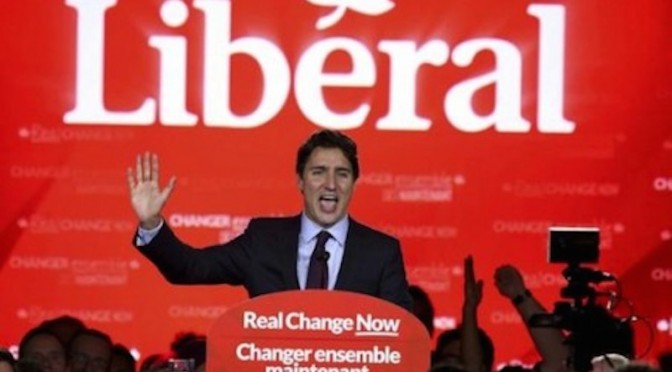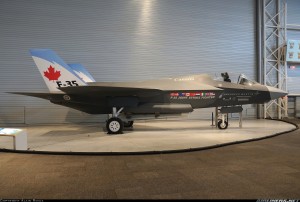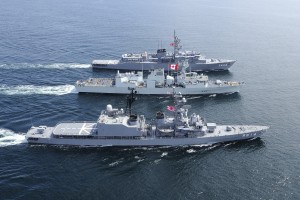By Robert C. Rasmussen
“But if I wanted to I could take Kiev in two weeks.” – President Vladimir Putin
Introduction
As the Russian Federation continues to fuel a protracted war in Ukraine, it is employing a method of strategic communication that has left policy makers, media outlets, and ordinary people confused and worried. The decades-old Soviet doctrine of Reflexive Control Theory[i] is a method of information warfare at the strategic and operational levels. This use of Reflexive Control Theory is an attempt to influence the decision-making processes of the Ukrainian government, the rebels, the international community, and the Russian people. It is designed to support Russia’s strategy of maintaining Ukraine as a semiautonomous region with independence as a mere formality.
[otw_shortcode_button href=”https://cimsec.org/buying-cimsec-war-bonds/18115″ size=”medium” icon_position=”right” shape=”round” color_class=”otw-blue”]Donate to CIMSEC![/otw_shortcode_button]
Reflexive Control Theory as Doctrine
Reflexive Control Theory was developed by Soviet military strategists in the 1960s. The premise is relatively simple: use deception and disinformation to shape an opponent’s perceptions of the situation so it voluntarily selects the courses of action most conducive to one’s own interests. It is exactly this type of application of Reflexive Control that a young Vladimir Putin would have learned in his early development at the 401st KGB School and in his career as a KGB/FSB officer. While in principle applicable at many levels, it particularly lends itself to communications at the strategic level.
Russia’s Use of Reflexive Control in Strategic Communications
Russia’s strategic communications regarding Ukraine are calculated to shape outside perception of Russian actions, and opponents’ reactions. In doing so, Russia hopes to induce actions that work in favor of the Russian government.[ii] A combination of the haze of battle and political obfuscation can help create whatever story Russia wants for whatever audience it wants. The targeted audiences for specific messaging campaigns are pro-Russian separatists, the international community, and lastly the Russian people.
Russia’s strategic communications towards the rebels in eastern Ukraine have focused on keeping them in the fight. Two key messages pushed by Russia to keep rebels fighting are the message about Ukrainians in power being anti-Russian fascists, and how Russian administration of their territory would be better for the people there. There has been additional focus on the damage caused by warfare and the disruption of the lives of ordinary people in order to continually focus the anger of the rebels and keep up their will to fight.
The focus on the international community seems to be deterrence from entering the conflict at all. By keeping the fog of war rolling over the combat zone and increasing chaos, the situation is unpredictable. This unpredictability combined with a lack of political will effectively eliminates any possibility of direct action by an external actor. Russian displeasure at international sanctions encourages other actors to take out their displeasure through sanctions instead of directly supporting Ukraine with personnel, equipment, and aid money. In a very real sense, sanctions are a diversion. Russia has a large territory with a large quantity of people. Russia has previously isolated and restructured its economy in a manner that ensured relative strategic successes, and this capability is within the generational memory of current leadership. Accepting sanctions in the short term is strategically analogous to giving up territory to Napoleonic and Nazi armies, knowing that time is on Russia’s side.
Messages to the domestic population create moral justification for supporting rebels and the prospect (now realized in an on-again, off-again fashion) of widespread combat operations in eastern Ukraine. The overwhelming majority of news media is either state-controlled or controlled by owners loyal to President Putin. Meanwhile Putin’s political party, United Russia, has a simple majority in the State Duma. There is an overwhelming support base that is loyal to Putin’s government. These elements, put together, create unquestioned messaging pushing the idea of a fascist government in Kiev that does not represent the views of even a plurality of Ukrainians. This “illegitimate” Ukrainian government, according to the message, is only in control due to the brute force of a small Euromaidan mob. By sending humanitarian convoys with military escorts into Eastern Ukraine, Russia is trying to demonstrate its humanity. The point of this messaging is to focus popular rage on the Ukrainian government. Such rage can be channeled into support of sustained combat operations and weathering the effects of economic sanctions.
Conclusion
Russian strategic communications regarding Eastern Ukraine have involved messaging crafted with the doctrine of reflexive control in mind. The concept of reflexive control focuses on tricking an opponent or audience into making decisions that works to an actor’s advantage, and has been a core doctrine of Soviet and Russian security forces since the 1960s. This concept shows itself in the messaging that Russia has given to various audiences and its pronounced effects – it keeps separatists fighting, maintains popular support, and prevents foreign intervention.
Robert C. Rasmussen is a Second Lieutenant in the New York State Guard, and currently serves as Aide-de-Camp to a Brigadier General. He has a MA in International Relations and a Certificate of Advanced Studies in Security Studies from Syracuse University’s Maxwell School of Citizenship & Public Affairs. He also has a BA in International Relations & Geography from the SUNY College at Geneseo. He has previously worked as a Legislative Policy Fellow for the New York State Senate, a Research Intern at the U.S. Military Academy, and as a Research Intern the National Defense University. His views are his own and do not reflect the views of the New York State Guard or the New York State Division of Military & Naval Affairs.
Read other contributions to Russia Resurgent Topic Week.
[otw_shortcode_button href=”https://cimsec.org/buying-cimsec-war-bonds/18115″ size=”medium” icon_position=”right” shape=”round” color_class=”otw-blue”]Donate to CIMSEC![/otw_shortcode_button]
[i] Thomas, Timothy L., “Russia’s Reflexive Control Theory and the Military,” Journal of Slavic Military Studies, Vol. 17: 2004, 237-256, http://www.rit.edu/~w-cmmc/literature/Thomas_2004.pdf, Accessed: 4 September 2014.
[ii] Ginos, Nathan D., “The Securitization of Russian Strategic Communication,” U.S. Army School of Advanced Military Studies, Defense Technical Information Center, Fort Belvoir: 2010, http://www.dtic.mil/dtic/tr/fulltext/u2/a536578.pdf, Accessed: 4 September 2014.






